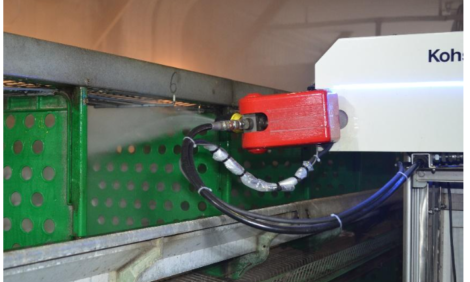



Physiological Responses to Low Atmospheric Pressure Stunning and Implications for Welfare
Low atmospheric pressure stunning is a humane approach that has the potential to improve welfare of poultry at slaughter, according to a new study from researchers at the University of Glasgow and Wageningen University in the Netherlands.The research by Dorothy McKeegan from Glasgow University together with D.A. Sandercock and M.A. Gerritzen and published in Poultry Science shows that low-atmospheric pressure stunning - LAPS - gradually induces unconsciousness without distress.
The research team says the method eliminates the need for live shackling and ensures that every bird is adequately stunned before slaughter and bleeding.
In LAPS, poultry are rendered unconscious before slaughter by gradually reducing oxygen tension in the atmosphere to achieve a progressive anoxia.
The effects of LAPS are not instantaneous, so the research team says there are legitimate welfare concerns around the experience of birds before loss of consciousness.
Using self-contained telemetry logging units, high-quality continuous electroencephalogram (EEG) and electrocardiogram (EKG) recordings were obtained from 28 broiler chickens during exposure to LAPS in a commercial poultry processing plant.
Application of LAPS was associated with changes in the EEG pattern in the form of increases in total power, decreases in mean frequency, and in particular, increases in slow-wave (delta) activity, indicating a gradual loss of consciousness.
Increased delta wave activity was seen within 10 seconds of LAPS onset and consistently thereafter, peaking at 30 seconds into LAPS at which point the EEG signal shared characteristics with that of birds in a surgical plane of anesthesia.
The researchers say that during LAPS, heart rate consistently decreased, with more pronounced bradycardia and arrhythmia observed after 30 seconds.
No heart rate increases were observed in the period when the birds were potentially conscious.
After an initial quiescent period, brief body movements - presumed to be ataxia/loss of posture - were seen on average at 39 seconds into the LAPS process.
Later (after 120 seconds on average), artifacts related to clonic (wing flapping) and tonic (muscle spasms) convulsions were observed in the EKG recordings.
Based on EEG analysis and body movement responses, a conservative estimate of time to loss of consciousness is approximately 40 seconds.
From the point of view of welfare, the report says that what matters is what the birds experience before loss of consciousness.
Behavioural responses to LAPS have been reported previously (Vizzier-Thaxton et al., 2010) and consisted of minimal response until the birds became ataxic, lost posture and began wing-flapping.
This is similar to observations of anoxia-induced gas stunning where no negative behavioural responses were seen before ataxia (Woolley and Gentle, 1988; McKeegan et al., 2007).
The mode of action of the LAPS process is hypoxia leading to anoxia, and the physiological and behavioural responses reported previously (Vizzier-Thaxton et al., 2010) are consistent with this. In response to LAPS, birds showed a pronounced reduction in heart rate (bradyarrthythmia) and vigorous wing-flapping (clonic convulsions) as would be expected with loss of brain function due to anoxic death.
The research adds that it would appear that LAPS induces hypoxia more slowly than other anoxia-based stunning approaches, which is not necessarily unacceptable providing the lengthened induction to unconsciousness is not accompanied by distress. The results of the study would suggest that this is not the case for LAPS.
The lack of behavioural responses indicating aversion or escape and absence of heart rate elevation in the conscious period strongly suggest that birds do not find LAPS induction distressing.
"The lack of even transient heart rate elevations in any of the birds during the conscious period strongly suggests that the birds did not find LAPS induction to an unconscious state distressing," the report says.
The study concludes that collectively, the results suggest that LAPS is a humane approach that has the potential to improve the welfare of poultry at slaughter by gradually inducing unconsciousness without distress, eliminating live shackling and ensuring every bird is adequately stunned before exsanguination.
Further ReadingYou can view the full report by clicking here. |
March 2013









